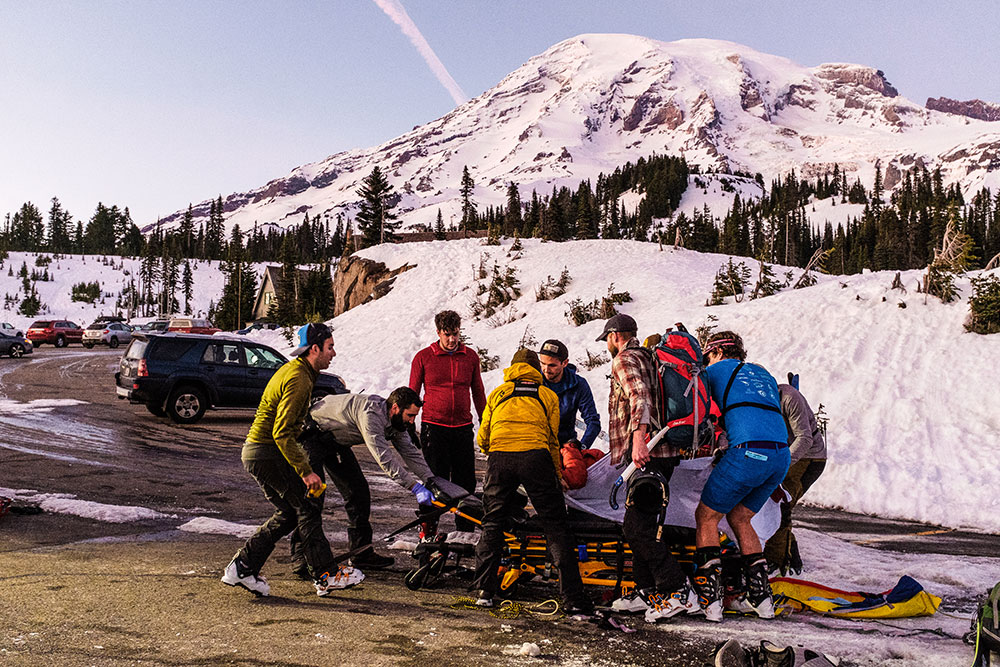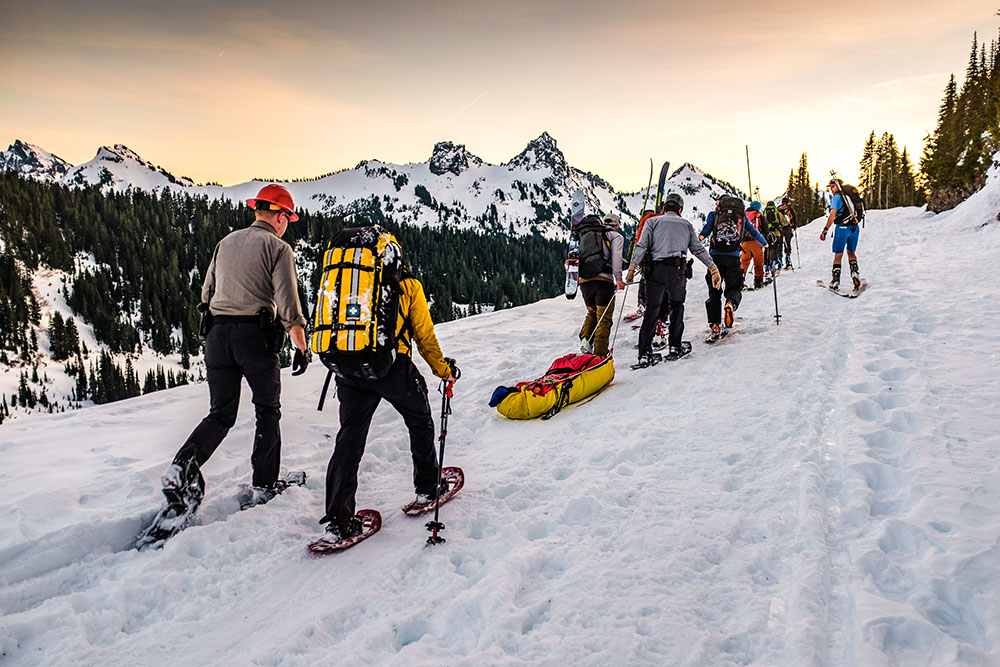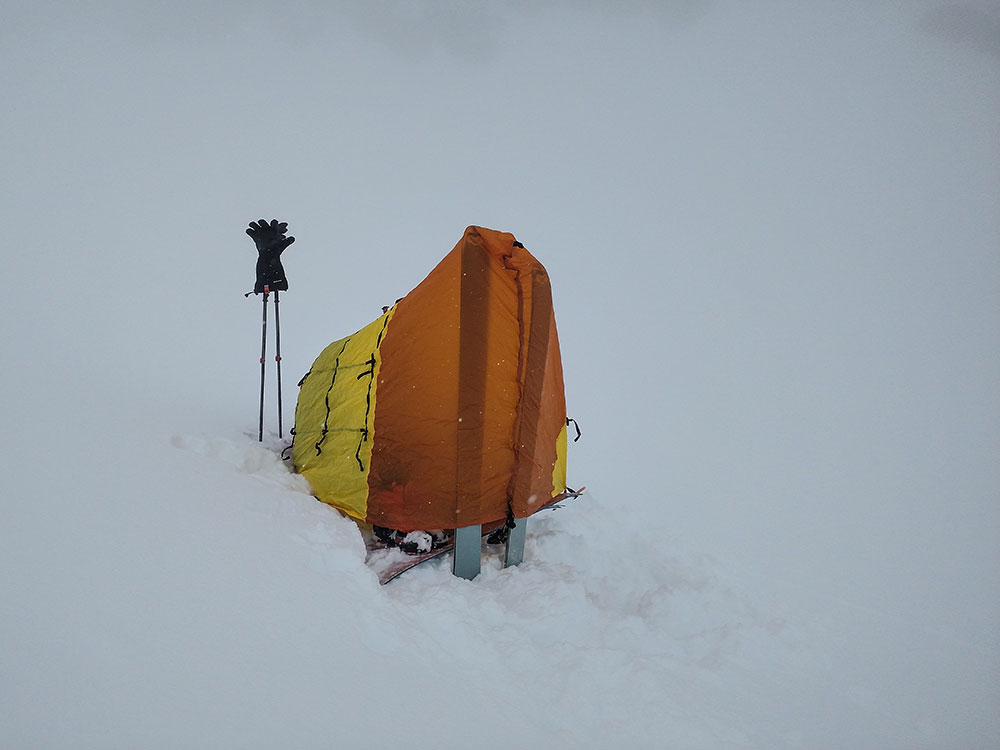Backcountry Skiing First Aid Kits
Backcountry Skiing First Aid Kits
Do you have the necessary tools to respond to an emergency in the backcountry? Do you have the medical training? Avalanche Rescue training? The more training I get and the more I know, the bigger my pack gets. Below is what I carry in my backcountry skiing first aid kit. Some items are essential items you should always carry in your kit, while others are situational, but always worth consideration. I’ve also included some items that are more rescue oriented than purely first aid.

Blister/Burn Care
The most common injuries while touring in my experience? Blisters and sunburns. The key to treating these injuries is prevention. I carry:
– Moleskin
– Athletic Tape and PT Tape
– Tincture of benzoin (makes things sticky so they’ll stay)
– 2nd Skin
– Sun Screen (Ginger Strength or 30 SPF+)
Fractures and Dislocations
Skiing and riding allows you to get going pretty fast on the downhill. Broken bones (wrists and legs most commonly) and dislocations (shoulders and fingers) can be quite painful and scary if severe enough. I carry:
– Pain Relief (Acetaminophen and Ibuprofen taken together are just as effective as presecription pain killers and safer to take in most cases. 1000mg acetapminophen + 800mg IBU every 8 Hrs.
– Triangular bandage
– SAM Splint (Situational, I usually have other things like climbing skins and poles with me that can be used as a splint)
– Stuff to stop bleeding in case of an open fracture (see below)
– Rescue shelter/bivy/sled and inflatable pad(in case we need to wait for rescue or move to a safer location)

Cardiovascular
Whether you just take a fall, smack a tree or rock, or are caught in an avalanche, you’ll likely have some sort of trauma leading to bleeding. To plug those holes in the human container I carry:
– PPE – Gloves and Mask (Non-latex gloves)
– Tournaquet (For severe bleeds)
– Blood clot powder and gauze (For severe bleeds)
– ABD Pads and standard gauze pads
– Wound Closure Strips (For deep wounds requiring stitches)
– Trauma Shears or Knife (for exposing areas under clothing unable to be removed)
– Irrigation Syringe (for cleaning of wounds)
– Various sizes of band aids for the widdle boo boos
Hypothermia
Just being out in a winter environment warrants carrying equipment to keep warm, but, worst-case scenario, someone is caught in a large avalanche and buried in snow for a while or falls through a snow bridge into a crevasse. Once they get out, they’ll be cold if not hypothermic. I carry:
– Extra layers – Large gloves and puffy coat
– Rescue shelter/bivy and inflatable pad (Get someone off the snow and out of the elements)
– Stove and sleeping bag (For overnight expeditions I’ll have these items and have them in the squad as rescue gear)

Drugs
As my father always says… “find your drug and find your dose.” Here are the essential drugs I’ve found helpful:
– Tylenol and Acetaminophen (Pain Relief)
– Aspirin (Pain/Swelling)
– Benedryl/Antihistamines (Allergic Reactions and Anaphylaxis)
– Diamox (For expeditions at high altitudes)
– Anti diarrheals (When you don’t want to poop anymore)
Building Your Backcountry Skiing First Aid Kit
Luckily for you, there are already a lot of great kits out there to choose from that are a lot more affordable than trying to entirely put together your own kit. Instead, I recommend getting a kit like those sold by Adventure Medical Kits that are ultra-light and waterproof and then supplement as needed.
Lastly, it’s important to remember that a first aid kit is only one part of your emergency gear/rescue kit. You should be well acquainted with Avalanche Rescue as well as how to administer first aid as a first responder to an incident. Get the gear, get the training, and then stay current on best practices. You’ll hopefully never need to use your knowledge or rescue kit, but, if 2020 is any indication… prepare for the worst. Shred safe friends.
Want to learn more? Check out our Ultimate Guide to Backcountry Skiing.
Back to Top